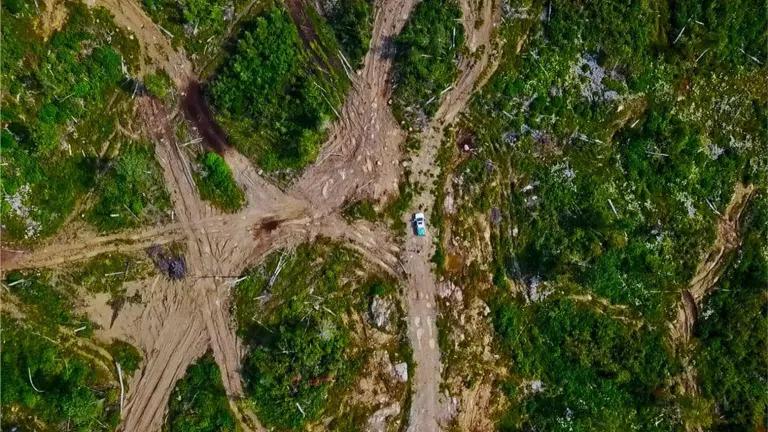The British Columbia Oil and Gas Commission (BCOGC) recently released a report documenting a series of earthquakes in the Horn River Basin in northeast British Columbia. The researchers concluded that these earthquakes were caused by hydraulic fracturing.
A total of 38 seismic events were recorded by the Canadian National Seismograph Network (CNSN) in the Etsho and Tattoo areas of the Horn River Basin between 2009 and 2011, ranging in magnitude from 2.2 to 3.8. A review of the seismic history of the basin from 1985 to present revealed that no seismic events had been recorded prior to 2009. This led the researchers to conclude that these events were anomalous and required further investigation.
To gain a better understanding of the seismicity, two dense seismograph arrays were deployed: one in the Etsho area, and one 40km southwest of Etsho, at Kiwigana. Both arrays surrounded multi-well pads and recorded seismic activity during hydraulic fracturing.
Wells in the area target the Horn River Shale for natural gas production and were drilled horizontally to 2,650-2,889 meters (~8,700 – 9,500 feet) true vertical depth. Each well was completed using multi-stage, slickwater hydraulic fracturing.
After reviewing the locations, depths, and magnitudes of the earthquakes and comparing to the timing and location of hydraulic fracturing, the researchers concluded that fracturing resulted in slippage along pre-existing faults, which caused the earthquakes. Seismicity increased with proximity to these pre-existing faults, although other factors like injection volume, fracture pressure, and pump pressure may also have played a role. In all but one case, the earthquakes occurred along faults that had not been previously mapped.
Drilling is occurring in a remote area and only one earthquake was strong enough to be felt at the surface, so fortunately no damage or injuries were reported for any of these events. The researchers claim that the faults in the area are generally deep, and therefore are not potential pathways for injected fluids to reach ground water, although they do not provide any data to independently evaluate this claim. Two of the 93 wells in the Etsho area were reported to have deformation of the casing, although the researchers concluded that this deformation could not be conclusively linked to the earthquakes. They also concluded that this deformation would not create migration paths for contaminants to reach ground water. It does not appear however, that groundwater was tested for the presence of natural gas or fracturing fluids.
The researchers made a series of recommendations, including:
- Operators should improve geologic and seismic site characterization, to identify and avoid pre-existing faults
- Induced seismicity monitoring and reporting procedures should be developed
- BCOGC will develop requirements for operators to submit microseismic data collected during hydraulic fracturing
- Additional data and study is needed to understand the controls on seismicity induced by hydraulic fracturing
Hopefully the Commission will move rapidly to turn these recommendations into enforceable standards.
Equally important, however, is for the Commission to make the data used in the study publicly available, to the greatest extent possible. Given the very small number of documented incidents of seismicity induced by hydraulic fracturing, it is crucial for researchers to have access to this data in order to better understand the mechanisms at work, which is critical to designing mitigation strategies.



